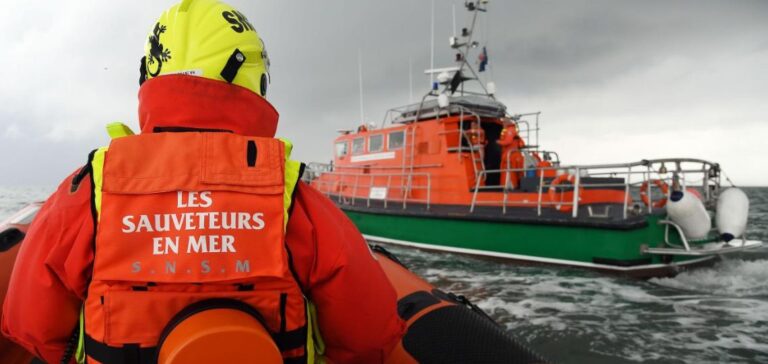The National Sea Rescue Society (SNSM), an association of volunteers who rescue ships in peril, will receive a share of the tax on offshore wind farms, according to a decree published Saturday in the Journal Officiel.
The SNSM, “the only rescue organization at sea approved” by the authorities, carried out 4,593 rescue operations in 2021, it says in the text. The decree published Saturday had been signed on February 23 by the Secretary of State for the Sea Hervé Berville during a trip to Calvados.
The SNSM will receive “a share of 5% of the tax assigned to wind farms,” according to a statement issued at the time by the Secretary of State. “This tax could represent from 2023 up to 400,000 euros” of resources for the association, said the same source. In the future, the SNSM’s coffers could be replenished, via this tax, to the tune of “several million euros per year as the offshore wind farms scheduled on the various French seaboards are commissioned.
The association, which also receives an annual state subsidy of six million euros, will thus be able to “depend less on private donations”, Hervé Berville emphasized. Money boxes of the SNSM in the shape of lifeboats are often fixed at the edges of the French ports to collect the donations.
According to its website, the association has more than 5,000 volunteer onboard rescuers who, at the request of the regional surveillance and rescue center (CROSS), “carry out search operations at sea, assist ships in difficulty, assess the condition of people to be rescued, give them first aid and bring the wounded and shipwrecked ashore”.
The tax on offshore wind turbines is paid half to “coastal communities where facilities are visible”, 35% goes to fisheries committees, 10% to the French Office of Biodiversity and 5%, therefore, to the SNSM.






















